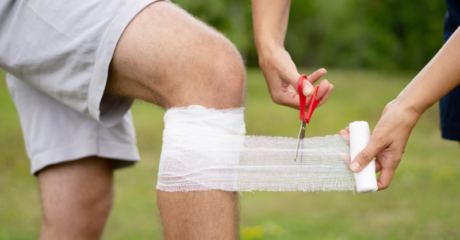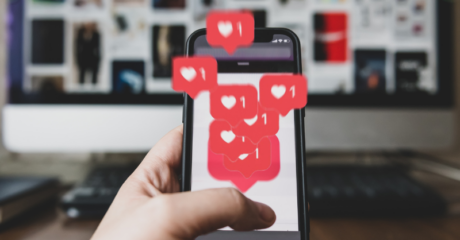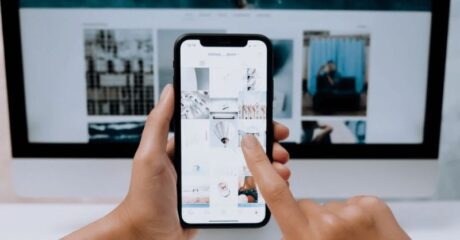
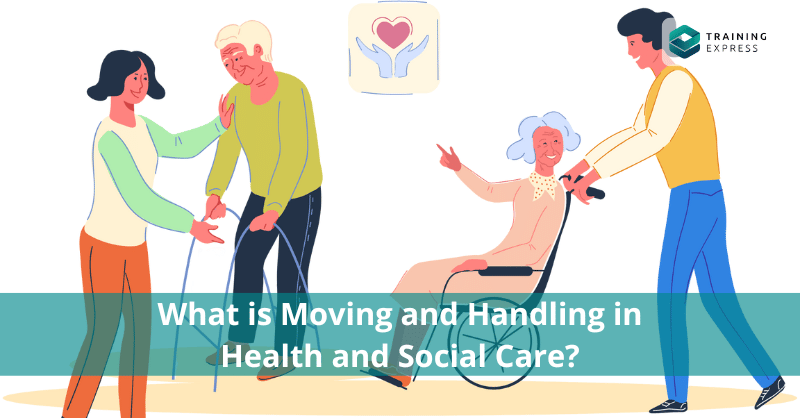
Table of Contents
What is Moving and Handling?
The act of “manual handling” of individuals is referred to as moving and handling. Manual handling is the act of moving, lifting, pushing, or supporting something with your muscular force. In the event of “moving and handling,” you will use your physical strength to assist people. Moving and handling in health and social care involves assisting a person in your care to move or relocate. The work may involve helping a person in/with several activities.
Such as the following –
- Getting into and out of bed.
- Bath, shower, and bed bath.
- Using the restroom.
- Walking.
- Sitting down.
- Getting into and out of vehicles.
Types of Moving and Handling Equipment in Care
The type of equipment may differ according to the demands of service users. Therefore, you should evaluate the users’ needs before supplying the moving and handling equipment. In addition, you must help them maintain their freedom and safety. Types of equipment for moving and handling in health and social care may include the followings.
|
|
|
|
|
|
|
|
|
|
|
|
|
|
Moving and Handling Techniques
In the event of moving and handling in health and social care, it’d be better to follow the proper techniques. So, let’s look into some strategies that may help you acquire the right way of moving and handling.
1. Chair Repositioning Under Supervision
The chair should be of appropriate height (not too low) and have armrests for this technique. You can also use a sliding sheet to help with chair shifting. Request that the service users do the following things.
- Place their feet flat on the floor, apart and slightly tucked under the chair.
- Maintain a straight angle with their hips and legs.
- Lean forward so that their upper body is higher than their knees.
- Get up and move as far back into the seat as possible.
- Slide back into the seat by pushing back with their feet and armrests.
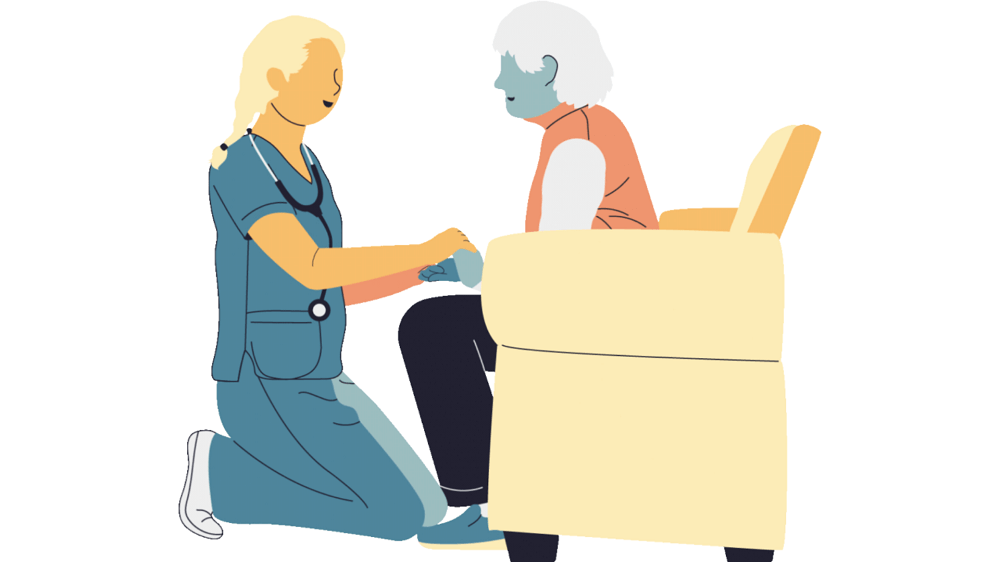
2. Supervised Sit-to-Stand (One Carer)
You must ensure that users place their hands on the chair’s armrests. Next, do the tasks as follows.
- Help the users lean forward in the chair and move towards the front of the seat.
- Help the users place their feet flat on the floor.
- The service users should have their feet hip-width apart and under their knees.
- While still sitting, ask the users to bend forward so that their upper body is above and over the tops of their knees (“nose over toes”).
- If necessary, gently rock the users back and forth to develop momentum to assist them in standing while instructing “ready, steady, stand”.
- On “ready and steady”, instruct the user to rock forward gradually with each syllable.
- Help the service users raise themself to a standing position utilising the armrests or surface on which they were seated in response to the command “stand”.
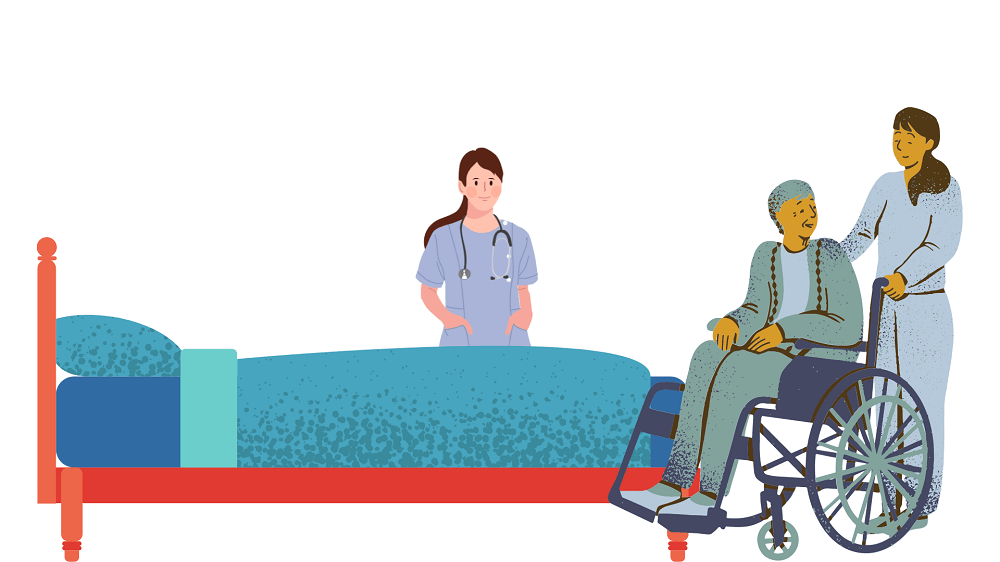
3. Supervised Sit-to-Stand (Two Carers)
Before assisting the service users to stand, ensure sufficient room surrounding the chair for the carers. Next, follow the techniques detailed in “Supervised Sit-To-Stand (One Carer)”. However, now both carers should stand in the lunge position. In addition, you should be facing forward at the side of and behind the user.
Each of you must put your outside hand flat on the front of the user’s shoulder. In addition, place your arms across the lower back and around the hips, not the waist. Now, both of you move forward with the user, with the lead carer offering verbal cues (“ready, steady, and stand”). Simultaneously, stand up with the user, and bring your inner legs through to step in tight to the user’s side. Each of your hips should be in contact with the user’s side.
4. Sit-to-Stand With a Standing Hoist
You can only use a standing hoist if the service user can bear weight on at least one leg. In addition, the user must be able to participate and comprehend the instructions. Also, they must be able to manage and balance their upper body. You can implement the following techniques.
- Explain to the user how the standing hoist will assist them in standing, and preferably demonstrate how it works to convince them that it is safe.
- Utilise the hoist sling on the customer.
- Ascertain that the sling is the suitable size for the customer.
- The sling must be tight enough to prevent itself from riding under the arms.
- Position the standing hoist and adjust the hoist legs to fit around the furniture.
- Place the sling bar on the hoist.
- Adjust the kneepads on the hoist to fit the user, making sure the kneepads are below their kneecaps.
- If necessary, wrap the leg strap across the back of the user’s knees.
- Connect the sling to the standing hoist using the closest loop reachable without dragging the user forward.
- As you raise the sling bar, instruct the customer to place their hands on the hand grips (depending on the hoist) and stand up.
- They can lean back into the sling gently.
- Reposition the standing hoist to the desired seating position for the user.
- Once the user is positioned above the surface to which they are being transferred, lower the standing hoist.
- Encourage the user to bend at the hips or aid with the bend and lower themself as the sling bar moves.
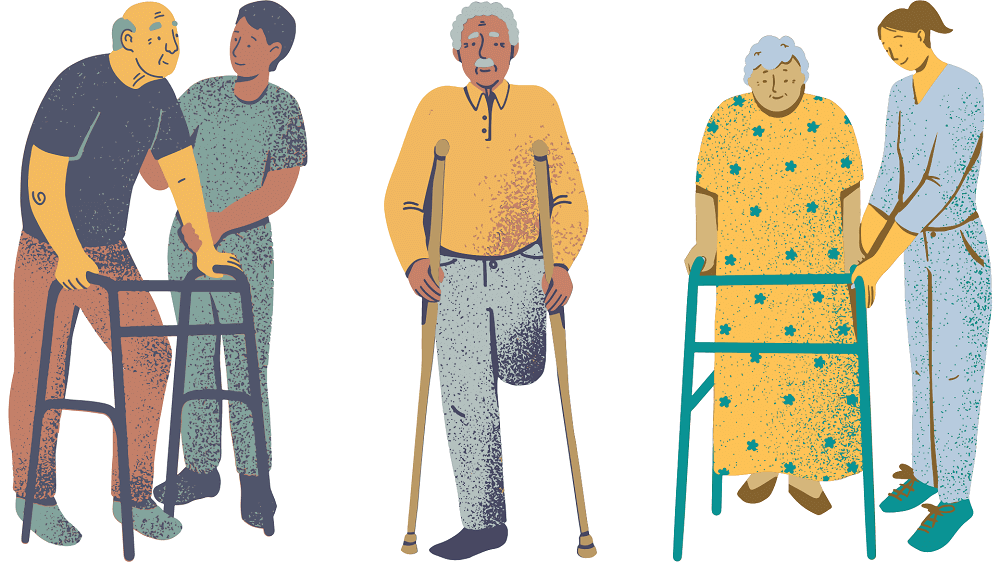
5. Assisting Fallen Users
First, examine a fallen user’s airway, breathing, and circulation following CPR recommendations and the user’s care plan. Then, if possible, ensure the area around the user is safe and free of potential hazards.
Secondly, continue the assessment as needed, following appropriate first aid protocols. In addition, determine if you can move the person. If the user is hurt, make them comfortable on the floor and seek additional medical attention. If they are not injured, remain calm with the user and do not rush them to get up. It will aid the user’s ability to stay relaxed and comfortable.
Thirdly, please select the appropriate strategy to assist them. And explain the procedure, and communicate throughout the journey to provide reassurance. Always remember that not thoroughly assessing the situation may result in injury to both you and the user.
Fourthly, inquire whether they believe they can stand themselves up with instruction. In addition, place a chair as close to the user’s hip as feasible once they are on their hands and knees. Next, ask them to lean on the chair with their closest hand. Then use their nearest leg to place their foot flat on the floor.
Finally, push up into a sitting position using their leg and arm. If the user is dizzy or feeling worse, have them lie down and hoist them.
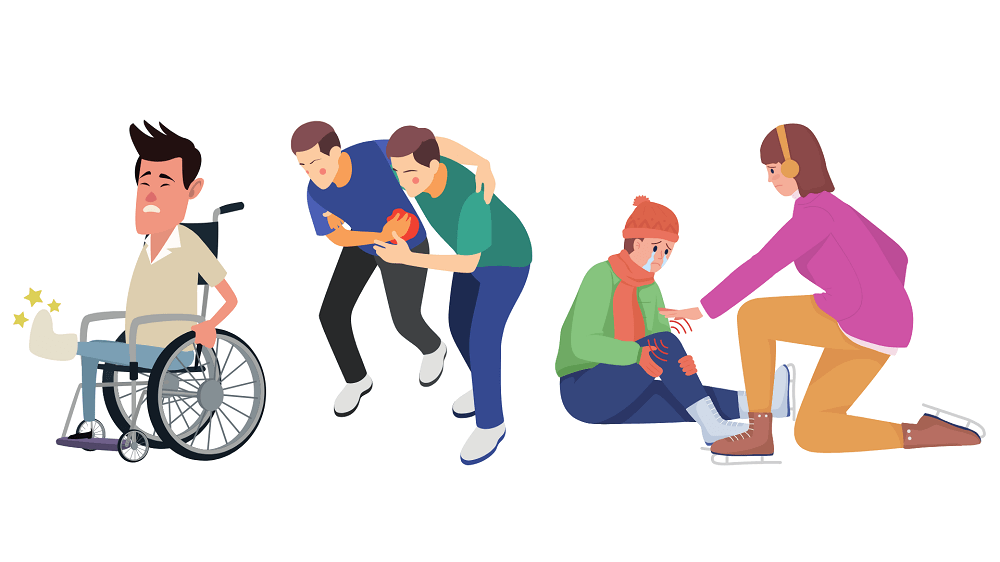
What are the Moving and Handling Policy and Legislation in Health and Social Care?
The following policies may be applicable when you implement or need moving and handling in health and social care.Buying Equipment to Lift or Move Someone
To buy equipment for moving and handling in health and social care, you must be aware of the objectives and mechanisms of each piece of equipment. For example, a hoist is a robust metal frame. The frame contains a lifting mechanism that you can operate manually or electrically. Again, you must charge the electric hoist regularly if you use the electric ones. So, you need to determine suitable equipment for your services. Follow the NHS Guidelines for buying the right equipment.Illegal Moving and Handling Techniques
Illegal moving and handling in health and social care refers to physical contact that are harmful to users or carers. Such techniques have the potential to cause unavoidable pain and discomfort. In addition, when health and care personnel treat users roughly, users may suffer abuse. These incidents can occur due to ignorance or inadequate application of moving and handling procedures. Illegal and rough techniques are associated with the following things.1. The Drag Lift
The drag lift is when the carer places a hand or arm under the user’s armpit. This lift might injure the carer’s spine, shoulders, wrists, and knees. In addition, there is a risk of harm to the user’s upper arm fractures and shoulder dislocation.2. The Orthodox/Cradle Lift
In the orthodox lift, two carers place their hands beneath the user’s arms or behind the back and underneath the user’s leg. The carer lifts at arm’s length while twisting the trunk and holding the user away from the centre. In addition, an orthodox or cradle lift is likely to injure the user’s shoulders and knees.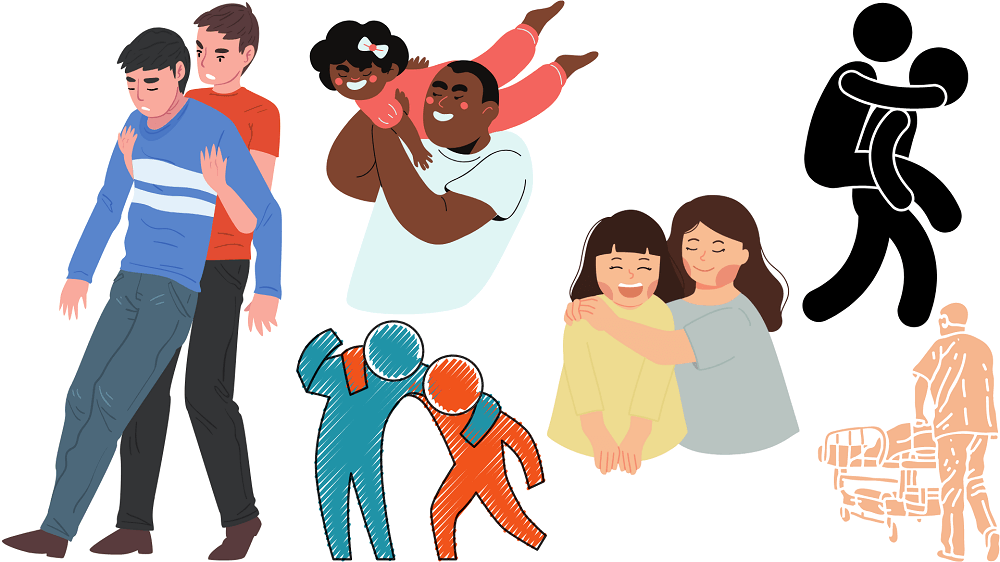
3. The Through-Arm Lift/Slide
In the through-arm lift or slide, two carers work together on either side of the user to move or slide them into a sitting posture on the bed. This technique puts strain on the caregiver’s posture and position. Additionally, it causes pain in the user’s forearm and underarms.
4. The Shoulder Lift/Slide
Another illegal technique carers use to shift a user on a bed is the shoulder lift. This lift imposes uneven weight distribution on one shoulder. As a result, carers may face injuries on the shoulder.
5. Bear Hug
This technique requires the user to move or support themselves by wrapping their arms or hands around the carer’s neck. Suppose users fall while in this position. The entire weight of the user falls over the carer’s neck. If users fall backwards, their impulse will be to keep their grip on the carer’s neck, forcing the carer to tumble.
Injuries That Usually Occur as the Result of Moving and Handling
Injuries are common when you perform moving and handling in health and social care. You might become unable to fulfil your duties due to injuries. In addition, you’ll be compelled to abandon your job in extreme cases. Let’s look into some common injuries.
1. Falls
Carers may find their range of vision blocked by users they are moving. As a result, they may trip or slip on wet floors. Falling can cause bruising, lacerations, or shattered bones. These injuries will make you unfit for an extended amount of time.
2. Musculoskeletal Disorders
Repetitive wrong moving and handling techniques can put pressure on muscles and bones. Carers may use more force than their physical capability. As a result, it is more likely for them to get injured. Musculoskeletal disorders are not always the result of a single factor. Multiple factors contribute to that disorder. Such as
- Doing two carers’ jobs alone.
- Maintaining wrong postures.
- Frequently bending down.
3. Hernias
Repeated muscle strain can result in hernias. Hernias develop when internal organs push through muscle tissue deficiencies. This type of injury can occur as a result of excessive straining. Curing hernias need surgical procedures. If you are an elderly doing care work, you are more vulnerable to it.
What is a Moving and Handling Risk Assessment?
Service users cannot move and require supervision or support when moving. That’s why you need moving and handling in health and social care. The moving and handling techniques differ depending on the user’s aptitude and dependency. First, analyse the user’s mobility, cognitive ability, and need for assistance. After that, decide on the best strategy for transferring a user.
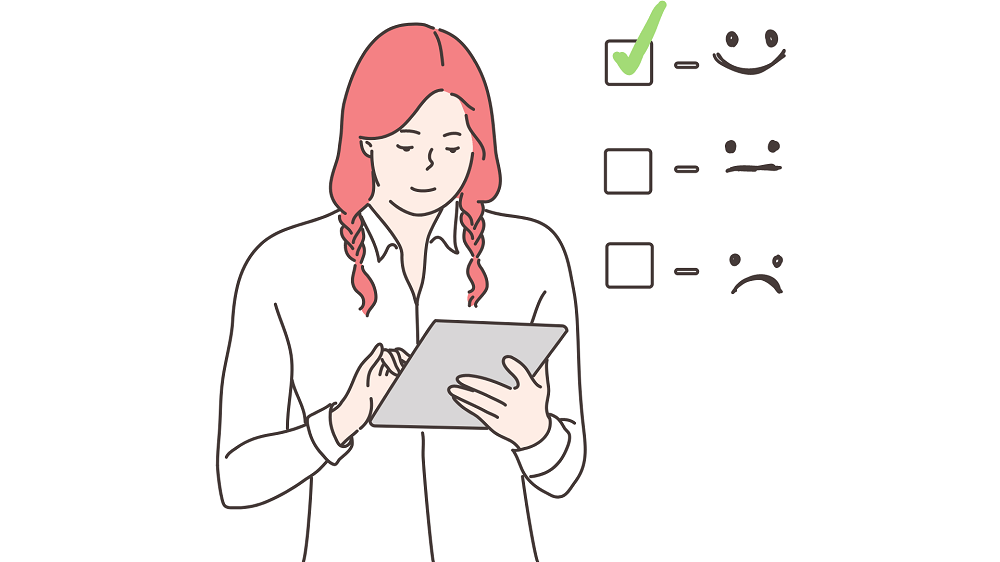
Before employing any technique, you should perform a risk assessment. For example, you must do a mobility assessment. It involves the user’s capacity to move, sit, balance, and other relevant aspects. In addition, the assessment should determine the number of carers and equipment required for the user’s moving and handling.
Risk assessment is crucial in community settings when solitary carers work alone. Therefore, a thorough assessment is a must. In addition, carers must employ moving and handling techniques consistent with the risk assessment. Furthermore, the risk assessment should establish the number of environmental changes. Finally, the assessment itself should be a cost-effective procedure.
Lifting Checklist
Create a lifting checklist to verify that you have taken all necessary precautions. The checklist is as follows.
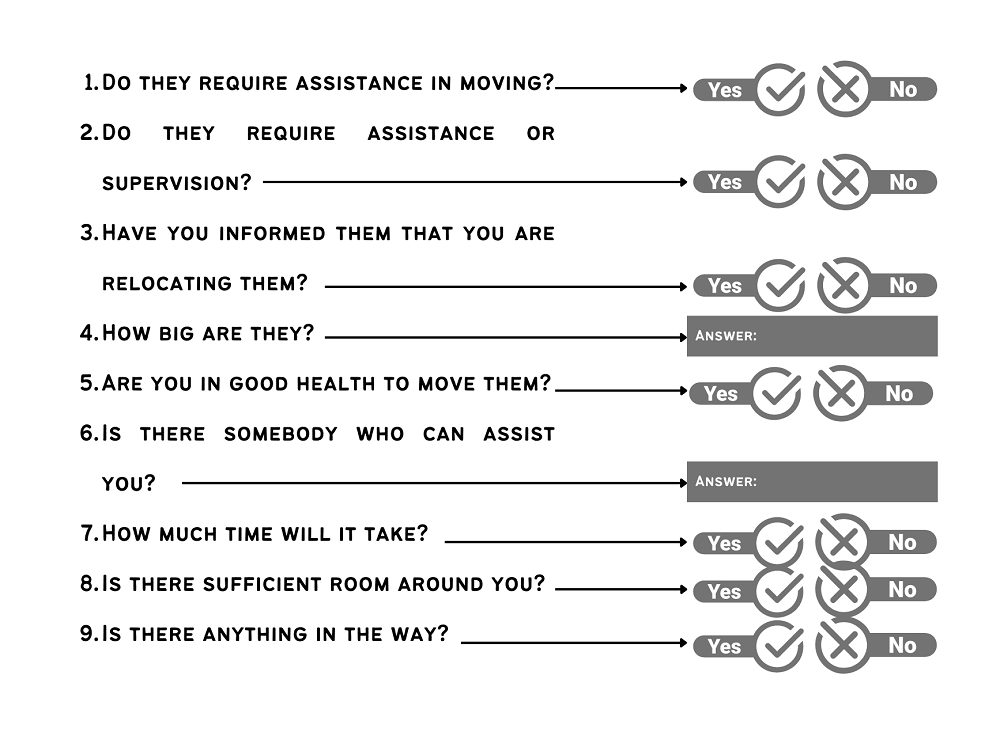
Practical Tips if You Care For Someone
If you are a carer, you can follow some tips to ensure your and the user’s safety.
- First of all, determine where you need to move them. For example, the place can be a bedroom, bathroom, or elsewhere.
- Secondly, learn about the common injuries carers face.
- If you need more expertise on it, visit our Health and Social Care course.
- Next, follow the checklist for moving and handling in health and social care. Review all the points and make sure you answer all the questions.
- Finally, be aware of the local council’s obligations to help you, train you, and provide you with the right equipment.
FAQs
Frequent questions may come to your mind regarding moving and handling in health and social care. We’ll address some of them below.

Why is Moving and Handling in Health and Social Care Important?
Moving and handling is a necessary task in health and social care. If you work in care, you cannot avoid working with people who need movement help. People who are ill or in need of assistance require your support. You must assist them in moving and safely returning to their bed. Therefore, it is critical to follow proper moving and handling techniques.
What is the Employer Responsibility Regarding Moving and Handling?
Employers must conduct a proper and sufficient evaluation of each task in case of moving and handling in health and social care. In addition, they must complete risk assessments. Employers must take appropriate steps to minimise the risk of injury to the staff. Employers should also try to convey information to their employees about the nature of the people they will be moving.
All in all, employers should also provide the necessary training to their employees.
What are the Safe Techniques of Moving and Handling?
The safe movement and handling techniques in health and social care are as follows.
- Make a firm, secure hold.
- Place the feet correctly.
- Maintain a straight posture throughout.
- Make joints and muscles in the back less strained by maintaining an upright position.
- Preserve the natural curvature and alignment of the spine.
- Keep the user or hoist close to your body.
How do I Properly Move When Using a Wheelchair?
The user must be sitting before transferring into the wheelchair. First, place the wheelchair beside the bed near you. Next, swing the user’s feet off the edge of the bed and utilise momentum to help the user sit up.

During the transfer, the user should help maintain their weight on their good leg. However, if the user begins to fall during the transfer, lower them to the nearest flat surface, such as a bed, chair, or floor.
You must keep your back straight when pushing the wheelchair. In addition, keep your knees bent. Keep it close to your body when raising, pushing, or pulling the wheelchair. All in all, maintain a shoulder-width distance between your feet.
How Do I Use Hoists Safely?
First, determine which hoist you will use for what task. Next, select the style and size of the sling, as well as any loop or leg attachment options. In addition, find out if you require safety gear, such as safety belts.
Also, determine the number of carers required to complete the work. In addition, you must find important information on the individual being hoisted.
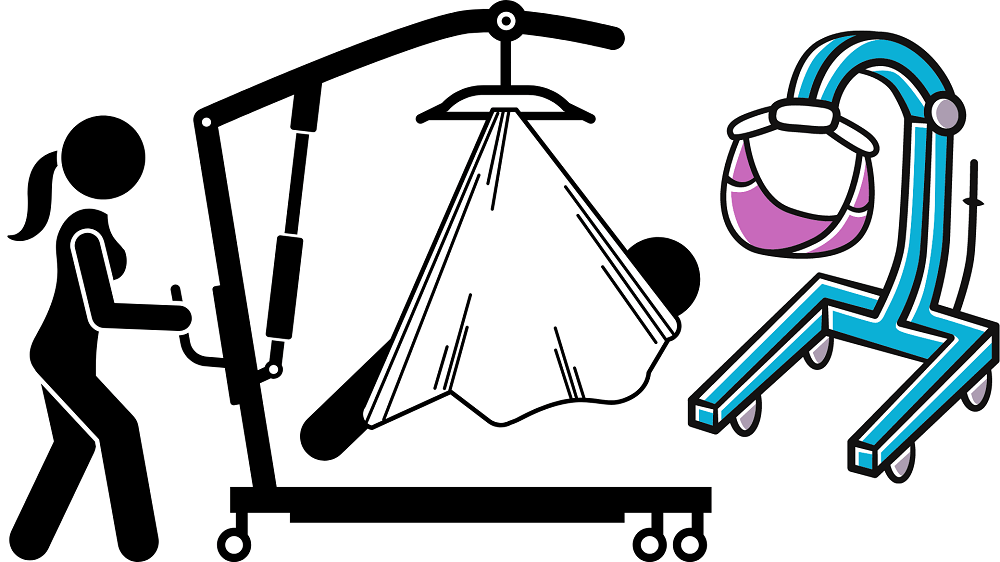
Finally, you must share this information with your staff and keep it readily available for future reference. Maintaining a fast reference guide could be pretty handy.
How Often Should Carers be Trained in Moving and Handling?
On their first day at work, all carers should undergo rigorous training in moving and handling in health and social care. Additionally, carers must take annual training.
You may introduce a new moving or handling equipment or technique in your care. In that case, each carer should undergo updated training to ensure they are proficient in its use. You must view manual handling training as an integral component of organisational processes. Carers and users both benefit from the yearly moving and handling training. In addition, your care organisation will be at less risk of injuries due to expert carers.
Summary
In health and social care, you may assist a person in several activities, such as getting into and out of bed. However, unplanned moving and handling can significantly injure you and the person.

Also, moving and handling risk assessments are necessary for health and social care. The review helps you determine the required number of carers and equipment. You must follow the right and safe techniques for moving and handling in health and social care. Otherwise, you’ll make your carers or users face health consequences. Train your health and social care staff and ensure they know the proper moving and handling techniques.
Learn More
- Available Courses
- Career Bundles73
- Animal care5
- Law8
- Quality Licence Scheme Endorsed111
- Teaching13
- Teaching & Academics Primary27
- Accounting & Finance Primary30
- Training3
- Design9
- IT & Software44
- Healthcare126
- Marketing31
- Health and Safety402
- Construction48
- Electronics25
- Hospitality22
- Health and Social Care219
- Child Psychology37
- Management377
- Business Skills268
- First Aid70
- Employability264
- Safeguarding75
- Food Hygiene103
- Personal Development1277
 Food Hygiene
Food Hygiene Health & Safety
Health & Safety Safeguarding
Safeguarding First Aid
First Aid Business Skills
Business Skills Personal Development
Personal Development






